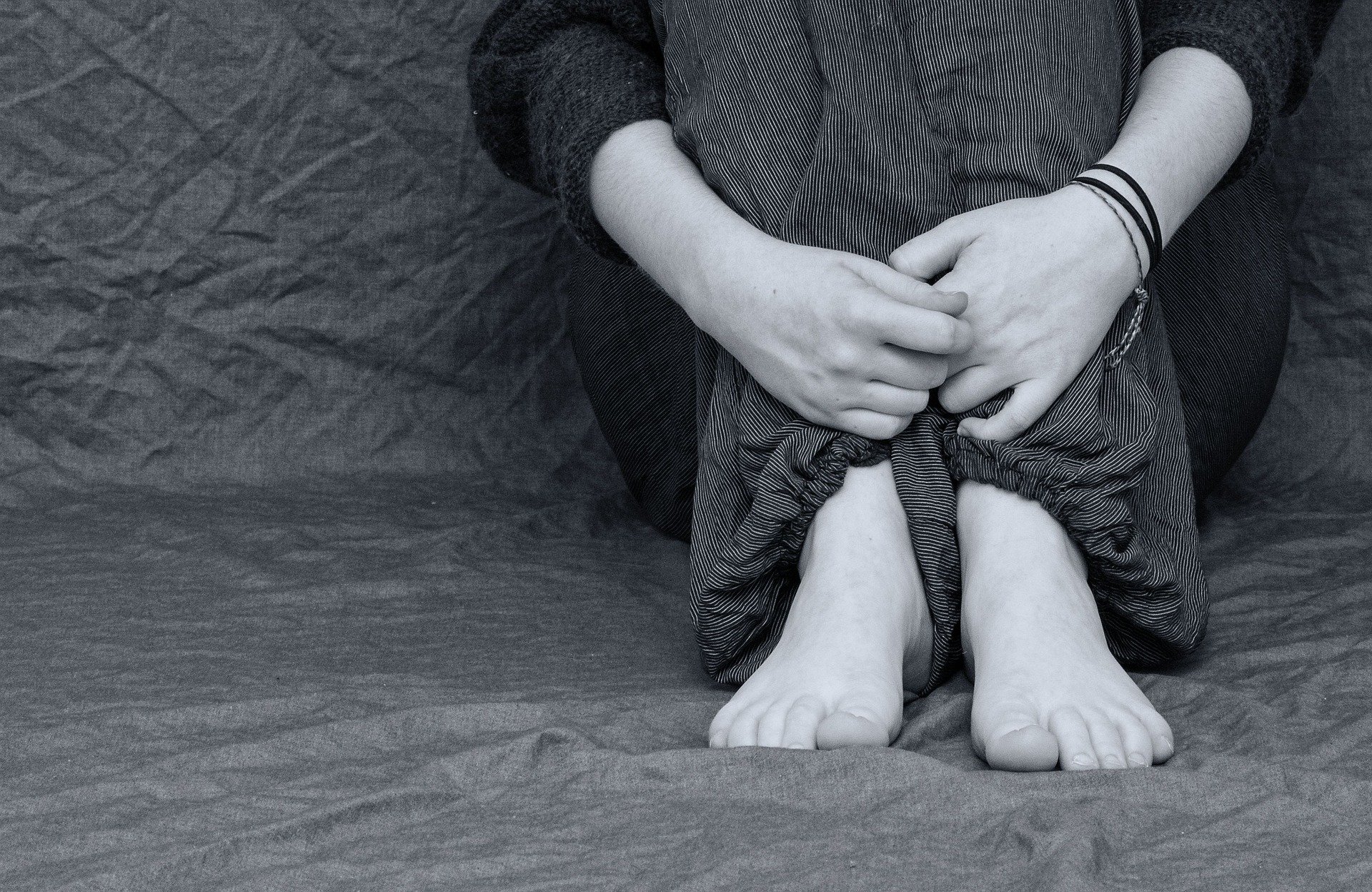Human trafficking is one thing you don’t really consider, except if you encountered them in movies. It seems that such a thing cannot possibly happen in a civilized world.
However, current sex trafficking statistics reveal that human traffickers are jubilant over a new useful victim-tracking tool: online social platforms. This is proven by the growing number of trafficked individuals, adults and children alike, regardless of their origins.
Are you ready to learn to recognize how this modern slavery functions, including the new ways it has come to encapsulate the digital world? Read on and find out.
Top Ten Sex Trafficking Statistics for 2024
- In Europe, the Netherlands tops the human trafficking countries list based on the number of victims registered.
- The typical duration of sexual exploitation is 2 years on average.
- The worldwide sex trafficking statistics show around 4.8 million victims, the majority of them coming from the Asia Pacific region.
- Human trafficking statistics reveal that nearly 7,500 human traffickers were convicted around the globe in 2018.
- Forced labor was imposed on 24% of the victims of human trafficking in North America.
- Human and sex trafficking statistics suggest that 85% of human trafficking victims in the US have American citizenship.
- Child sex trafficking statistics suggest that the share of sexually exploited children is on the rise.
- Texas is the US leader based on the number of human trafficking offenses committed in 2018.
- One in 6 child runaways is likely a victim of child sex trafficking, statistics in the US suggest.
- With 14 million victims, India is the global leader in human trafficking, the facts confirm.
Human and Sex Trafficking Statistics Worldwide
There are no rules when it comes to estimating the danger of falling into the human trafficking trap. The numbers reveal that it happens all over the world. Here are some stats to keep you better informed and raise awareness of this issue.
1. Human trafficking statistics reveal that nearly 7,500 human traffickers were convicted around the globe in 2018.
(Statista; UNODC)
In a recent report, the United Nations Office on Drugs and Crime (UNODC) made an observation based on human trafficking statistics worldwide and found that the number of convictions has increased since 2009.
In fact, the number of convictions for sex trafficking increased by 67% since 2007, and the reason behind this may not always be a bigger crime rate but a better capacity to spot these offenses.
However, in regions and countries where there’s an ongoing armed conflict, human trafficking is often not detected.
2. The worldwide sex trafficking statistics show around 4.8 million victims, the majority of them coming from the Asia Pacific region.
(ILO)
In a report about modern slavery, the ILO revealed that 4.8 million people worldwide were victims of sex trafficking in 2016, of which more than 99% were women and girls.
Asia and the Pacific region accounted for 73% of the victims of forced sexual exploitation globally in 2016, whereas Europe and Central Asia’s regions accounted for 14%. Another 8% of sex trafficking victims had citizenship issued in Africa, and some 4% came from the Americas’ region.
3. Global human trafficking facts reveal that Western and Southern Europe counts the highest percentages of victims of foreign origin.
(UNODC)
The latest information on human trafficking indicates that most victims are found in their own countries of citizenship.
Nevertheless, in some countries—especially those in the region of Western and Southern Europe—the share of imported victims (75%) was greater than that of the domestic ones.
4. With 14 million victims, India is the global leader in human trafficking, the facts confirm.
(The Daily Signal)
Following the Global Slavery Index (GSI) data from 2014, India has the worst figures in human trafficking, accounting for 14 million victims. China, with 3.2 million victims, was second among the top 10 human trafficking countries, followed by Pakistan (2.1 million victims), Indonesia, Bangladesh, and Thailand.
5. In Europe, the Netherlands tops the human trafficking countries list based on the number of victims registered.
(Statista)
Europe is one of the most popular regions for human trafficking worldwide, as revealed in the worldwide facts about human trafficking from 2014. And on the European human trafficking countries list, the Netherlands is at the top, with 1,561 victims registered in 2014.
The remaining victims in Europe that year were registered in the UK (1,358), Romania (757), France (710), and Germany (583).
The stats show that human trafficking is, unfortunately, trending upwards in Europe. For example, during 2015 and 2016 in England and Wales, there were 13,000 registered victims of modern slavery, which was a fivefold increase from 2012.
6. About 30% of trafficking victims are children, and the number is growing according to the human trafficking global statistics.
(Statista; UNODC)
According to the latest worldwide NODC report on human trafficking, 23% of the total number of traced victims were girls, and around 7% were boys, making up almost a third of the total number of human trafficking victims in 2016. Compared to figures for child trafficking back in 2004, the percentages have more than doubled.
In 2016, around 21% of young female human trafficking victims did forced labor. Among boys, 50% were trafficked for forced labor.
7. Child sex trafficking statistics suggest that the share of sexually exploited children is on the rise.
(Statista; UNODC; ILO)
About one million of the 4.8 million sex trafficking victims around the globe are children. In 2011, more than a third of human trafficking victims were children, which represented an increase of 38% since 2004. Among the total number of victims, 21% were girls, and 13% were boys.
In 2016, a staggering 72% of underage female victims were used for sexual exploitation, and around 27% of underage male victims shared the same fate.
8. Forced marriages belong to modern slavery and sexual exploitation in sex trafficking, the facts confirm.
(ILO)
According to the arranged marriage statistics from 2016, there were around 15.4 million people in forced marriages worldwide. As per the ILO, suffering a loss of sexual autonomy and providing free labor under cover of marriage justifies this classification.
Although there are male victims of forced marriages, 88% of the victims are female, with more than a third (37%) under 18 years of age. Among those under 18 years in a forced marriage, 44% are under 15.
9. The sex trafficking industry counts $99 billion in profits each year, sex trafficking statistics worldwide from 2014 reveal.
(ILO)
It’s estimated that the global number of victims in forced labor and human trafficking is 21 million. As per the data in the ILO’s economic report on forced labor from 2014, commercial sex trafficking around the world is worth $99 billion, with an estimated annual profit per victim of $21,800.
10. The typical duration of sexual exploitation is 2 years on average.
(ILO)
Data from the IOM suggest that the average duration of sexual exploitation around the globe is 23.1 months. Most victims manage to escape or are freed within this period.
Human Trafficking Facts & Stats in North America
America is no exception when it comes to this issue. Every year, thousands of human trafficking cases are reported to the authorities, which just leaves us wondering how many go undetected. Following are some stats to shed more light on this issue.
11. Forced labor was imposed on 24% of the victims of human trafficking in North America.
(UNODC)
The latest statistics on human trafficking reveal that in North America, victims of forced labor represented an essential part of human trafficking. Most of the reported victims were adult men (at 56%), and 18% were women. Another 12% were underage girls, and 14% were underage male victims. They were either forced into labor or forced into criminal activities.
In several cases, female victims were both sexually exploited and forced to do labor.
12. 71% of the victims of human trafficking in North America are trafficked for sexual exploitation, facts about sex trafficking confirm.
(UNODC)
The worldwide human trafficking statistics from 2016 reveal that more than 70% of the victims detected in the region of North America were trafficked for sexual exploitation.
13. There were overall 17,880 prosecutions for human trafficking in the US in 2017.
(Statista)
Unfortunately, human trafficking of every kind is on the rise in the US, as per the figures released by the US State Department. From 7,909 prosecutions in 2011, the number was almost 56% higher in 2017. On a positive note, convictions have also been on the rise since 2011, but at a slightly lower rate.
14. Sex trafficking statistics in the United States reveal an estimated 199,000 incidents of children’s sexual exploitation each year.
(Fox News; UNODC)
Estimates by the US State Department show that over 300,000 American children and minors are at risk for sexual exploitation, with an estimated incidence of 199,000 such offenses happening each year.
In 2016, the UNODC reported that 65% of the detected trafficking victims in the region of North America (encompassing the US, Canada, and Mexico) were adult women, and 20% of them were girls. Underage girls account for 25% of the victims trafficked for sexual slavery.
15. One in 6 child runaways is likely a victim of child sex trafficking, statistics in the US suggest.
(Missing Kids; Statista)
Endangered runaways are considered children under 18 who have run away from guardians, parents, or childcare facilities. The National Center for Missing and Exploited Children (NCMEC) reported 23,500 endangered child runaways all across the US in 2019, suspecting that one in six was a potential victim of child sex traffickers.
51% of the endangered runaways are between 16 and 17 years old. The average age that child victims of sex trafficking go missing in the US is 15.
16. Human sex trafficking statistics in the US reveal that 56% of female victims of sex trafficking started off as runaway youth.
(Human Trafficking Hotline)
Dating violence statistics suggest that those who have fallen victim to violence or sexual assault in the past are more likely to be targeted by traffickers.
Furthermore, individuals with economic difficulties also have a greater chance of crossing the path of a trafficker, as confirmed in recent single mother statistics. Sex traffickers are usually very proficient in recognizing these vulnerabilities.
17. Human and sex trafficking statistics suggest that 85% of human trafficking victims in the US have American citizenship.
(Fox News)
Around 85% of human trafficking victims in the US originate from there. Besides, Mexico and the Philippines were the second and third most common places of origin, according to a 2018 report released by the State Department.
18. Texas is the US leader based on the number of human trafficking offenses committed in 2018.
(UCR FBI)
The human trafficking statistics by state issued by the FBI reveal that police authorities in Texas registered 312 offenses in commercial sex acts or involuntary servitude in 2018.
The vast majority of offenses were concerning commercial sex acts, 265 in total, of which six were offenses made by individuals under the age of 18. Another 53 were offenses of involuntary servitude, of which no offenses were made by juvenile perpetrators.
19. Minnesota had the best offense-to-clearance ratio for offenses involving commercial sex acts in 2018, FBI sex trafficking stats confirm.
(UCR FBI)
Clearance of a commercial sex act usually means that at least one person is arrested or charged with the offense, or the case has been sent to the court for prosecution. With 87.8% of its commercial sex offenses being cleared in 2018, Minnesota has the best clearance rate of these types of offenses nationwide.
20. Human and sex trafficking statistics suggest that around 1,000 potential sex trafficking victims were recruited online between 2015 and 2018.
(We Live Security)
Online dating statistics confirm that these sites can be a potential hub for sex traffickers. What’s more, other popular social media sites like Facebook, Instagram, Snapchat, and Craigslist are massively used by sex traffickers in the US.
1,000 potential victims reported being recruited this way over three years. Sadly, the number of those who fell for this remains unknown. According to this source, false representation and skillful recruiting tactics were used, catfishing statistics confirm.
FAQ
Where is sex trafficking most common?
(The Daily Signal; ILO)
As per the latest ILO statistics from 2016, most sex trafficking victims worldwide are found in countries in the Asia Pacific region (73%). Together, Europe and Central Asia accounted for 14%, and 8% of the sex trafficking victims had citizenship issued in Africa. Finally, 4% of sex trafficking victims were from the Americas.
More specifically, India, China, Pakistan, Indonesia, and Bangladesh are among the top human trafficking countries globally, based on the number of victims.
How does sex trafficking happen?
(Polaris)
Human trafficking happens through fraud, coercion, physical force, and other forms of manipulation and fraud-related methods. On the most basic level, human trafficking is stealing the freedom of an individual to force the person to do activities that will profit the trafficker. Such activities include criminal acts, commercial sexual acts, forced labor, etc.
What are some facts about human trafficking?
(Statista; UNODC; ILO)
Human trafficking encompasses forced labor, forced commercial sex acts, forced marriages, illegal adoptions, and more.
More than 70% of human trafficking is forced commercial sexual acts, also known as sex trafficking. Around 35% of human traffickers worldwide are women, and approximately 88% of the victims are women and girls. About one-third of the victims of trafficking are children.
Where do traffickers find victims?
(NY Post; Missing Kids; We Live Security)
They’ll often track and contact foster children, waiting outside foster homes. Traffickers also “hunt” in neighborhoods with high poverty rates, tracking adolescent runaways.
Another common method includes recruiting victims online, using dating sites, social media, and even job-search websites. They usually present themselves falsely and try to lure victims in with false job propositions or false claims of love.
Conclusion
In the land of the free, we should be more vigilant of the signs and indications of child and adult human trafficking victims. We must work together to prevent these devastating sex trafficking statistics from leaving a stain on our core human right: freedom.










